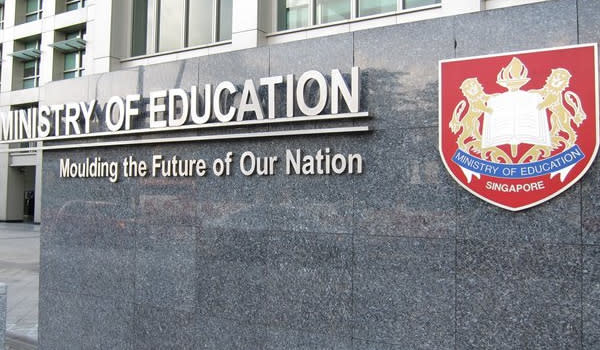Most re-hired retired teachers get 18% pay cut: MOE
The Ministry of Education (MOE) on Monday clarified that most teachers rehired after retirement would see pay cuts of 18 percent rather than a full 30 percent.
In a statement to the media, the ministry explained that the pay cuts are commensurate with the teachers' lighter workload as compared to the that of the permanent teachers.
"Some teachers who have not reached the maximum of their salary scales will see an even smaller reduction (than 18 percent); in some cases, they may not experience a reduction at all," said MOE's director of its personnel division Lu Cheng Yang.
However, teachers who held Head of Department (HOD) and subject or level head positions before they took up re-employment as classroom teachers will receive up to 30 percent pay cut in their salaries as they will no longer hold managerial responsibilities, he added.
MOE's statement comes after its recent decision to implement the pay cut drew flak from some senior teachers, the Singapore Teachers' Union (STU) and some netizens, who claimed that the move does not recognise the teachers past efforts and experience.
The ministry explained that the scheme to cut wages is part of the civil service's plans to prepare for a re-employment law which will make it compulsory for employers to offer to rehire workers who reach 62. The law will take into effect in January 2012.
It added that the framework for rehiring teachers was first introduced in 2008, ahead of the re-employment policy.
As part of this initiative, only selected teachers — those recommended by their Principals — were offered contract teaching.
Back then, it did not impose any pay-cut. This was in recognition of the duties of the retired teachers which remained unchanged after retirement. During this time, the teachers pay was based on their last drawn salaries.
Even under its old initiative, teachers holding HOD or level head positions also faced reductions in its pay.
However, with the introduction of the public sector-wide re-employment guidelines, MOE had to refine its re-employment practices and align them with other public sector employees.
This prompted the ministry to implement a series of changes, including providing the re-employed teachers with new job responsibilities that is lighter than that of the permanent teachers, it said.
The new work arrangements would be discussed and agreed upon between retired teachers and their supervisors.
"Re-employed retired teachers do not necessarily have to take on the same duties expected of teachers on the permanent establishment, as many may prefer greater flexibility and lighter responsibilities so that they can have more time for family and to pursue other personal interests," said Lu.
To reflect the revised work arrangements, MOE adjusted the salaries up to the mid-point of their respective salary scales.
It also addressed the backlash received as a result of the changes in the salaries.
Saying that it "values" the experience of senior teachers and "is deeply appreciative" of their contributions, MOE added that it has briefed retiring and retired teachers on the new re-employment framework.
However, the ministry said that it should have engaged them better, acknowledging that it is "aware" over the unhappiness of the new scheme. "Clearly, we should continue to engage, listen and to do better," said Lu.
On whether it might consider restoring the practice of paying retired teachers their last drawn salary, MOE said it will continue to monitor the take-up rate of re-employment.
It will also engage retiring teachers individually on their re-employment plans and will closely monitor feedback and will "review the scheme in due course".
The Singapore Teachers' Union, which was previously critical of the pay cut, said it notes MOE's position to conduct a review and "will continue to work in tandem with MOE to monitor the feedback on this matter".
Currently, more than 600 retired teachers out of a teaching force of 33,000 are serving as contract adjunct teachers.
MOE estimates that within the next two years, more than 250 retiring teachers will benefit from the new scheme, which apply only to new contracts signed by those above the age of 62, not to younger teachers who are rehired.


